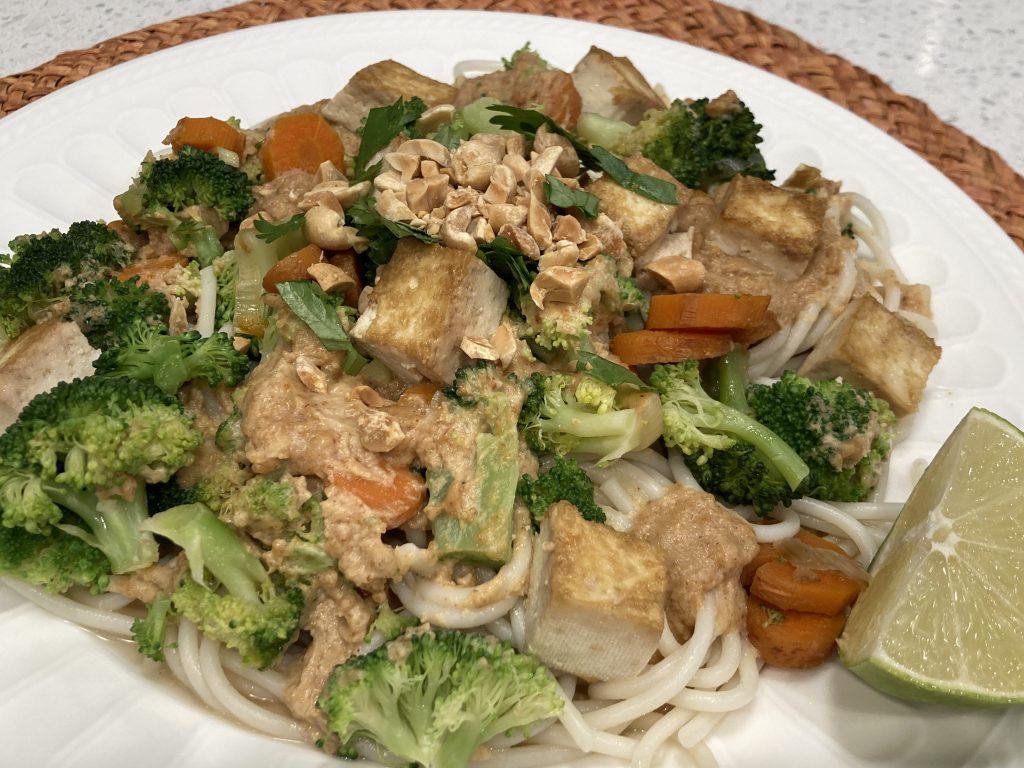Easy Dinners with Vegan Protein

Whether you are a strict vegan or an omnivore looking to add more vegetarian meals to your dinner routines, a Vegan Pad Thai will satisfy your checklist for an easy, satisfying, and delicious weeknight dinner.
Early on in my journey as a vegetarian, I was unaware that Pad Thai—one of my favorite dishes—is traditionally made with fish sauce. I will confess that I continued to indulge in an occasional plate of my favorite Thai food when dining out! Years later when I learned I need to be 100 percent gluten free to protect my health, I realized that fish sauce is routinely made with gluten, so I abandoned restaurant Pad Thai forever.
I have missed the particular blend of flavors that makes a good Pad Thai so delicious: peanuts, cilantro, and lime, to be exact. Finally, I decided to create my own version of Vegan Pad Thai, one that satisfies my tastebuds while not being overly high in carbs (like the traditional rice noodles). I selected Andean Quinoa Pasta, which is made with rice, to provide some protein for the 30-minute version of this recipe. Alternatively, of course, you can use rice noodles. You may also want to sauté some tofu cubes to toss into your dish, which may add another 10 to 15 minutes to your cooking but adds significantly more protein per serving.
Vegan bloggers like to say that most foods have protein, which is undeniably true. However, the richest sources of vegan protein are legumes—lentils and beans of all kinds, including soybeans, from which tofu is made. Proteins are the building blocks of life, essential to forming and repairing all the body’s tissues and necessary to patching up cells and to creating enzymes, hormones, and other essential chemicals. Most days I eat a protein-rich meal with a legume-based dish at lunch and dinner. Occasionally during summer, for lunch I’ll eat a salad with nuts and seeds instead. But a meal with only vegetables is not sufficiently grounding for me, and I would guess that’s true for anyone who has vata issues. Although you don’t want to eat heavy meals at night, I find that a protein-rich dinner is a key to good sleep.
You can certainly find recipes for vegan “fish” sauce online that you may want to try, but these seem to require several steps and extra time I don’t often want to invest in dinner. I decided to take a quicker route with today’s recipe—a peanut butter sauce that definitely meets my high standard for delicious! If you avoid peanuts, you can also try the sauce with almond butter or sunflower butter instead.
Enjoy this Vegan Pad Thai the next time you want to wow your family or guests with an easy meal!




